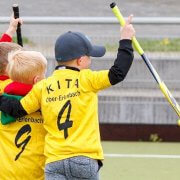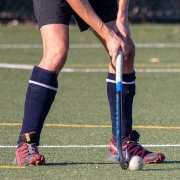-
Field Hockey
Is Field Hockey Expensive?

The influence and popularity of field hockey stretches all around the globe. There are hundreds of clubs that come together at the national and international levels to compete in matches and tournaments. As the sport has grown in popularity, it has increased in cost as well, but is field hockey expensive?
Field hockey can be considered an expensive sport, with parents spending an average of over $2,000 annually on field hockey, related to equipment as well as travel and tournament fees. While the goalie’s equipment is the most expensive, the most significant expenses are not directly tied to the position played.
Field Hockey Stick – Short and Unique

If you’re relatively new to the game of field hockey, you may wonder why the players’ sticks are so short. Most of the time, the players are in a forward bent position to keep the stick near the ball and the field’s surface, but wouldn’t it be better if they played with long sticks?
A field hockey ball travels very fast, and you need a maneuverable stick to control, launch, or stop such a fast-moving ball. Research has shown that a longer stick might give more leverage, but the short stick, combined with the forward-bending body position, is more functional on a field that provides shoe-grip.
Why Is Field Hockey so Popular in other Countries?

Similar to how soccer is referred to as football in certain parts of the world, making the distinction between ice hockey and field hockey is important as well, depending on where in the world you are.
Field hockey is a popular sport because so many ancient cultures across the world had a sport resembling field hockey, leading to its rapid adoption. In modern times, it is a fast-paced and technical sport that is exciting to watch. Players can compete internationally in places such as at the Olympics.
How Long Do Field Hockey Sticks Last?

Field hockey sticks are unique to the players who use them. They are different lengths and weights, as suited to the size and position of the player. Field hockey sticks are made of various materials, including wood, fiberglass, graphite, carbon, and even kevlar.
Defenders and goalies can typically expect a stick to endure for four to five years. Strikers, forwards, and midfielders can expect more extensive wear, though a well-wrapped stick should last for two to three years of constant play. The type of use will really determine how long the field hockey stick actually lasts.
What is the Hardest Position in Field Hockey?

An amazingly fast game in which the ball can change ends of the 100-yard field in seconds, engaging 22 players in rapidly shifting locations, a frequently asked question is, which is the most difficult position?
While each position is challenging, that of the midfielder or halfback is likely the most difficult. Like those playing striker, the midfielder must be able to challenge the opposition goal and score. The midfielder must also be able to defend and, above all, the midfielder runs continually, requiring superb stamina.
Can You Use Both Sides of a Field Hockey Stick?

Sports games come in all varieties, and some even have notable variations involved. One of the most famous examples of this is that of hockey and the differences between the ice and field versions.
Unlike ice hockey, you cannot legally use both sides of the stick in field hockey. One side of the stick is flat, which you can use for regular play, while the other side is deliberately curved and may not be used for contacting the ball at all. There are also other notable differences between field hockey and ice hockey.
What is the Most Important Position in Field Hockey?

To excel in any sport, you must master all aspects of the game. This holds true for field hockey. To master this complex team sport and make its execution look effortless, you start with the basics and tackle each game component, one by one. To start, let’s ask the question, “What is the most important position in field hockey?”
The goalkeeper is the most important position in field hockey. Quick reflexes, hand-eye coordination, and communication are essential to this position. With playing surfaces and match format changes, field hockey has become a sport where ball control, quick passing moves, and non-stop movement are crucial, making goalkeeper the most important position.